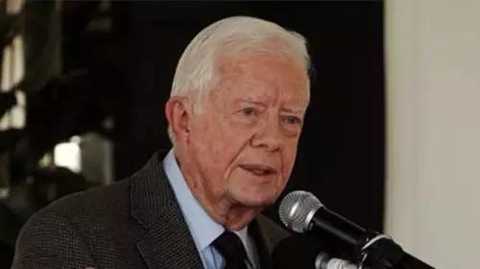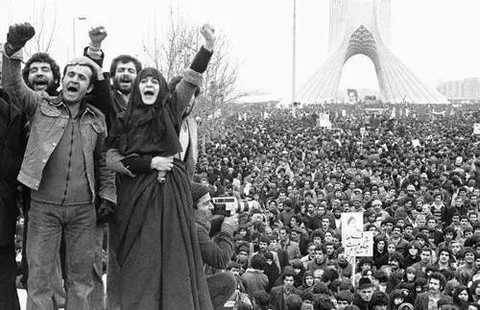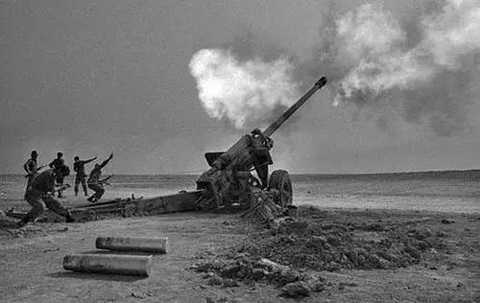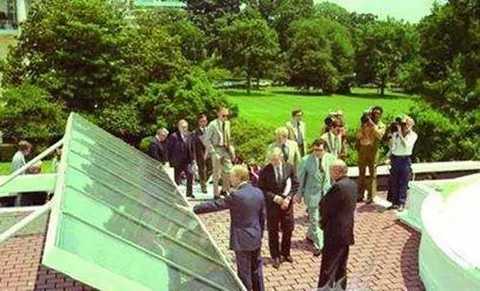[Recommended] Liu Ge: Why have several new energy revolutions in history ended in failure?
The author Liu Ge is a senior researcher at the Chongyang Financial Research Institute of Renmin University of China. This article was published on May 4th, "Hearing Ge" WeChat public number.
This article probably
2600
word
Read a total of needs
4
minute
When Carter came to China for a visit, I met Mr. Jimmy Carter and took a group photo at the G20 Think Tank Forum held by Chongyang Financial Research Institute of Renmin University of China. Only the four bodyguards that the US government has equipped for the outgoing president can also connect the old man of the coveted year with the former US president.
The most accurate assessment of him is: Carter is the most successful US president after he left office. Carter was only served as a US president and was driven out of internal troubles. The response to the oil crisis is the most important factor in the voter's low evaluation.

Former US President Carter participates in the G20 Think Tank Forum hosted by the National People's Congress
Since the 1970s, the oil issue has been the most laborious place in the internal and external policies of successive US presidents. With the rapid growth of oil consumption in the United States and the Western world, Arab oil-producing countries regard oil supply as the weight of the game. After the Arab war against Israel in 1973, oil prices skyrocketed and Nixon was forced to impose oil price controls across the country. But the result of violating the price law is that the domestic oil companies' production willingness is getting lower and lower, which leads to the continuous emergence of oil shortages. The cars that are growing outside the gas station have become a scene in the United States.
In 1977, Jimmy Carter, a peanut trader and amateur carpenter from Southern Georgia, defeated the incumbent President Ford to become the new president of the United States. Oil is the toughest problem Carter faces.
"Washington, April 5th - President Carter addressed the country tonight, saying that he will gradually abolish domestic crude oil price control and demand that Congress impose a windfall tax on oil producers. This decision may be wrong, complicated, and prepared. Controversially ending part of the US oil-dependent import program.†The New York Times on April 6, 1979 reported Carter’s ambitious plan with a skeptical tone.
Carter delivered a 23-minute national televised speech at the president's office. "China's national strength has been incorrigiblely dependent on a narrow strip of oil tankers that extends throughout the middle of the planet. It is located in the Middle East, orbiting the Persian Gulf, and is one of the most unstable regions in the world."
For decades, the United States has been a staunch supporter of Iran’s King Pahlavi. In return, Iran is also the most loyal and low-cost oil supplier in the United States. After the revolution, from the end of 1978 to the beginning of March 1979, Iran stopped exporting oil for 60 days, making the oil market short of 5 million barrels per day, accounting for about 10% of the world's total consumption. The supply of the world oil market is becoming increasingly tense.

The Iranian revolution has caused the United States to lose its most important ally in the Middle East and induced the Tehran hostage crisis.
This is the most direct background for President Carter’s attempt to change Americans’ dependence on oil. In a firm and outspoken tone, the president announced that Americans had to change their habits of living and working, prepared to endure the cold winter and hot summer, and had to drive a small car, and the frequency of driving was also reduced.
The reason why the United States has been killed by the Middle East oil-producing countries stems from the surge in US oil consumption. In 1970, the United States imported only 1.157 billion barrels of oil, and in 1977 it soared to 3.103 billion barrels. Oil consumption imports depend on it , from 35% in 1973 to 50% in 1977. The reason for the surge in US oil consumption is that the consumption patterns of residents have changed. More than 80% of American workers have opened private cars to work, and the suburbanization of living has increased the consumption of oil. At the same time, due to the long-term low-cost supply of oil, the energy consumption is seriously wasted. Carter is determined to change the habits of Americans in oil consumption. In April 1977, Carter proposed the first phase of the energy plan. After a long battle with the Republican Party in Congress, in October 1978 Congress approved a package of five energy bills, stipulating a phased cancellation of oil and gas prices. Control; encourage the replacement of oil and natural gas with coal; reduce taxes for those who improve energy efficiency; reform electricity tariffs; and encourage other energy-saving measures.
On April 5, 1979, Carter announced the second phase of the energy plan. First, it announced that it would phase out the control of oil prices. At the same time, it asked Congress to pass a 57% excess profit tax plan to encourage new research and development. energy. On March 13 and 17, 1980, the Congress and the Senate and the House of Representatives respectively passed the revised oil profits tax plan proposed by the Carter government. On April 2, Carter signed the bill. The bill provides for a 50% oil windfall tax on oil companies.
By September 22, 1980, the Iran-Iraq war broke out, oil production in both countries was at a standstill, the oil crisis was intensifying, and oil prices skyrocketed, setting a record of $41 a barrel. In response to the oil crisis, Carter took the world by storm and launched the "national advancement and retreat." In 1979, the American Synfuel Group was established to develop and produce new energy. In the first five years, the federal government provided $20 billion in start-up funding. Another ambitious plan is to set up a “solar bankâ€, which aims to achieve a strategic goal of 20% of total national energy consumption from solar energy by the year 2000. In 1980, the Parliament authorized the Ministry of Energy to invest $1.3 billion to fund research on ethanol fuel for vehicles. Carter declared: "We are about to implement the first energy development strategy in the history of the United States. We will take this away from the dependence on fossil fuels and achieve energy security in the United States. This is a better than the 'Star Wars', 'Marshall Plan' and The 'state highway system' adds up to a great strategy."

The eight-year war between Iran and Iraq caused a sharp rise in global oil prices until Reagan teamed up with Saudi Arabia to intervene.
Carter not only promotes energy conservation and alternative programs, but also practices as a model for energy conservation and emission reduction. He installed a solar water heater on the roof of the White House to supply hot water from the White House and held an open ceremony on June 20, 1979. Under the impetus of Carter, the United States and many countries in the world have witnessed a golden period of research and development of new energy.
However, due to the failure of the Iranian Americans to resolve the incident and the long-term "stagflation" of the economy, Carter lost in the election with Reagan. Its new energy strategy, which is vigorously promoted, has also been abandoned halfway. In 1984, with the continuous decline in oil and gas prices, the "state-owned enterprise" synthetic fuel company went bankrupt, and in 1986 it was forced to dissolve by the government.
"Like Ford, Jimmy Carter is faced with a complicated situation and a difficult situation when he assumes the presidency. Probably no president can make a difference in this unfavorable situation, but Carter seems to be worse, many people He believes his leadership style is self-righteous and inhuman. He retired in 1981 and became the lowest-ranking president of the 20th century. Carter spent most of his time solving energy and economic problems. He took office during the economic crisis, the first The move is to alleviate unemployment by increasing government spending and lowering federal taxes. The unemployment rate is lower, but inflation is soaring. It is not so much because of his fiscal policy, it is because of the rise in oil prices. "Allen Brinkley’s masterpiece in American History still gave Carter a low score, but he was kind enough to defend him.
In 1981, the White House changed hands. As a symbol of the new energy policy of Carter, the solar water heater on the roof of the White House became a display. In 1986, on the grounds of repairing the roof, President Reagan dismantled the solar water heaters of the White House and threw them into the warehouse. Years later, a university transported the solar water heaters abandoned by the White House to the university laboratory for collection.

Carter’s White House water heater became a symbol of his political failure, and Obama even refused to reload solar water heaters in the White House.
Carter’s new energy policy failed. After many years, the Bush administration’s biofuels program is also nearing a dead end. In the mainstream economics world, whether it is Carter or Bush's new energy policy, it is a testament to the government's intervention in the market. An economist wrote: "For more than half a century, the federal and state governments have tried to control the energy market and promote new technologies through government-specific grants, but we have seen it repeatedly. The result is just wasting the taxpayer’s money and creating one failure after another.â€
But from another perspective, if there is no unremitting efforts from Carter to George W. Bush to rely on the United States to break away from imported oil, will the United States now have a booming shale gas boom?
The White House solar water heater story has a more unexpected ending: After many years, Huang Ming, the president of China's solar energy company Huangming Solar, heard about the experience of the White House solar water heater. After many inquiries, he finally found the whereabouts of the water heater. He originally wanted to buy it as a collection. I didn't expect the university to generously donate the solar collectors of the main components of the solar water heating system on the White House to the Solar Museum established by the Huangming Group. This is a story that sounds very interesting and profound.
As a developing country, China is more constrained by oil than it was in the United States. Although the solar water heater is a sign of Carter’s failed new energy policy, can it be a small totem for China to solve its own energy dilemma?
(Welcome to the People's Congress Chongyang Sina Weibo: @人大é‡é˜³, WeChat public number: rdcy2013)
Chongyang Financial Research Institute of Renmin University of China (NPC) was established on January 19, 2013. It is the main funded project of Mr. Qi Guogen, Chairman of Chongyang Group, who donated 200 million yuan to his alma mater and established an education fund.
As a new type of think tank with Chinese characteristics, the National People's Congress Chongyang aims to take the pulse of finance, study academics, pay attention to reality, build a country, and serve the public. Citizen Chung Yeung has hired 96 former politicians, bankers and well-known scholars from more than 10 countries as senior researchers to conduct substantive cooperation with think tanks in more than 30 countries.
At present, the National People's Congress Chongyang is recognized by the Chinese government as the G20 Think Tank Summit (T20) to jointly lead the think tank, the China Finance Association Green Finance Professional Committee Secretariat, the “One Belt and One Road†China Think Tank Cooperation Alliance, and the China-Iranian Official School to build the “Belt and Road†The Chinese side led the think tank. In 2014, Citizen Chung Yeung was selected as one of the “Top 150 Think Tanks in the World†by the University of Pennsylvania, the internationally recognized Global Think Tank Report (only seven Chinese think tanks were consecutively shortlisted).
Signal Super Soft Fabric,Super Soft Fleece,Super Soft Flannel Fabric,Super Soft Cuddle Fleece Fabric
Jiangyin Xiangxu Textile Co., Ltd. , https://www.fabricxiangxu.com